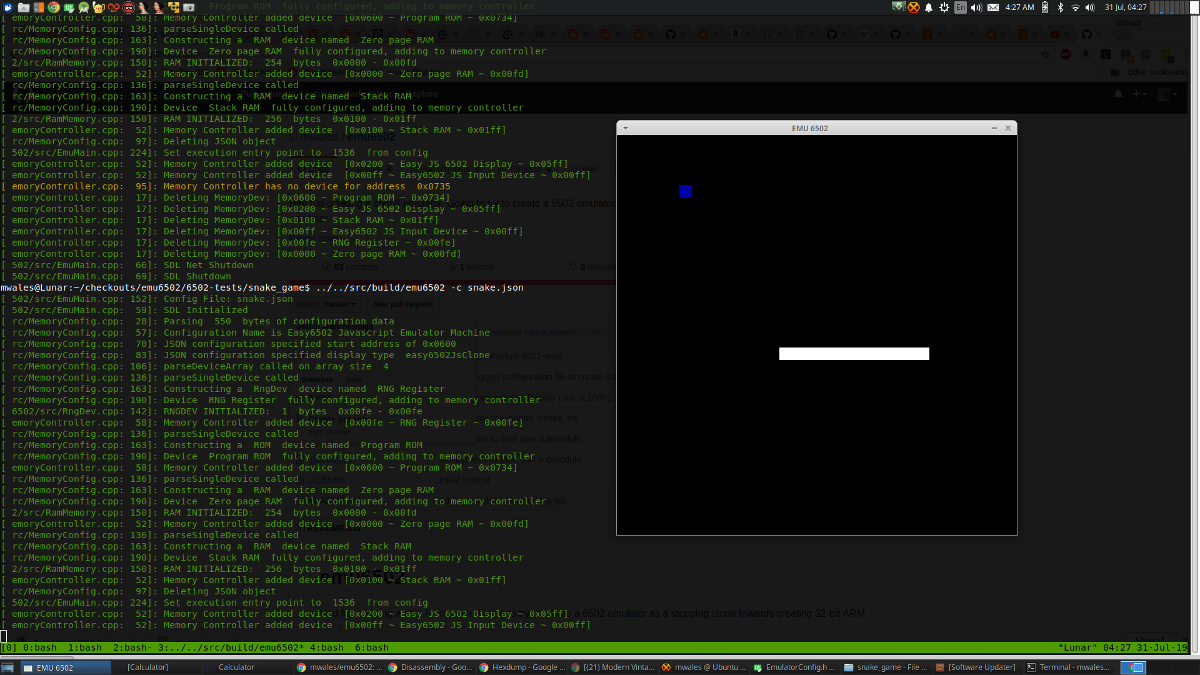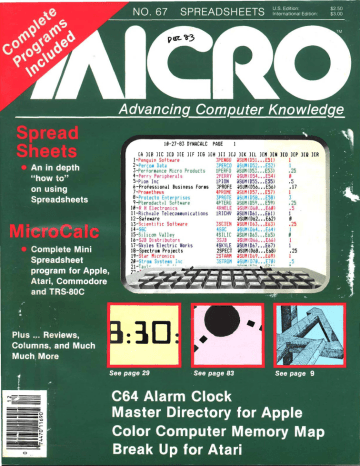

Not only are anti-promotion rules stupid and easy to circumvent, I don't think they really achieve anything useful.Michael Kowalski created the 6502 Simulator many years ago.
#6502 EMULATOR ARM FREE#
Note 2: While many subreddits ban self-promotion, we allow it! If you're working on something cool, interesting, or useful for the benefit of the FPGA gaming scene-whether it's an open project or a commercial product-please feel free to post about it. Contact the moderators if you have questions about posting non-FPGA content! Note 1: We're currently accepting some submissions of non-FPGA-related content of a similar nature CPLD, microcontroller, bare-metal (minimal/OS free), custom electronics hardware, etc. There are other fans and developers online pretty much all the time. The Classic Gaming community on Discord is one of the best places to chat in real time about this whole "FPGA gaming" thing, among other things. It's older brother, the MiST is a bit less powerful and geared towards 16bit computer and 8bit console cores, but is still very popular and (unlike the MiSTer) based on an entirely open hardware platform. The MiSTer is a great way to get into FPGA gaming, whether you're interested in development or just want to play some great community-made cores! The MiSTer is an open source and community developed FPGA-based console and arcade board hardware emulation project. In other words, FPGAs make creating custom chips relatively accessible and affordable, but it still isn't cheap or easy! This is a somewhat advanced topic in electronics, so it's recommended that beginners first look into learning the basics of electronics and digital logic first. For example, if you're trying to re-implement a game console on an FPGA, it goes without saying that you need to have an in-depth understanding of how that particular console works. Finally, you need to have a good understanding of the problem domain. Strictly speaking, HDLs are not 'programming languages', however it can be convenient to think of them as analogous - programming languages describe software, while HDLs describe hardware. Not only do you need an FPGA development board with enough logic elements and IO pins, but you also need a strong understanding of electronics engineering, digital logic, and usually proficiency in a hardware description language (HDL, such as Verilog or VHDL). While FPGAs make development of custom chips much more affordable and accessible than ASICs, it's worth noting that FPGA development can be a somewhat expensive and is undoubtedly an involved process with a lot of requisite knowledge and skills.

"Sounds great! But, how do you configure FPGAs?" Without a doubt there are other cool, interesting, and useful ways that FPGAs can be used to create fun and original gaming devices in the works and more waiting to be explored! Better yet, the reconfigurable nature of FPGAs means they can switch between different functions or possibly perform multiple functions at one time! They have been used to create low-latency video upscalers or line multipliers that allow old, original hardware to be played on modern high-resolution displays in a way that not only looks great, but feels responsive. They have been used to create powerful flashcarts for consoles that support memory mappers, enhancement co-processors, or other on-cart logic. They have been used to create one-to-one recreations of a variety classic gaming hardware, often adding new features or modern upgrades. What do FPGAs have to do with gaming?!"įPGAs provide incredible flexibility for digital electronics design and engineering, including gaming hardware. However, unlike ASICs, FPGAs are designed to be fully or partially reconfigurable, making FPGAs a kind of digital electronics 'shapeshifter' with the ability to change design and functionality via reconfiguration. FPGAs, like application-specific integrated circuits (ASICs), are typically designed and customized to perform a variety of specific, often complex tasks.

A field-programmable gate array (FPGA) is an integrated circuit (IC or 'chip') that is designed to be configured after manufacturing.


 0 kommentar(er)
0 kommentar(er)
